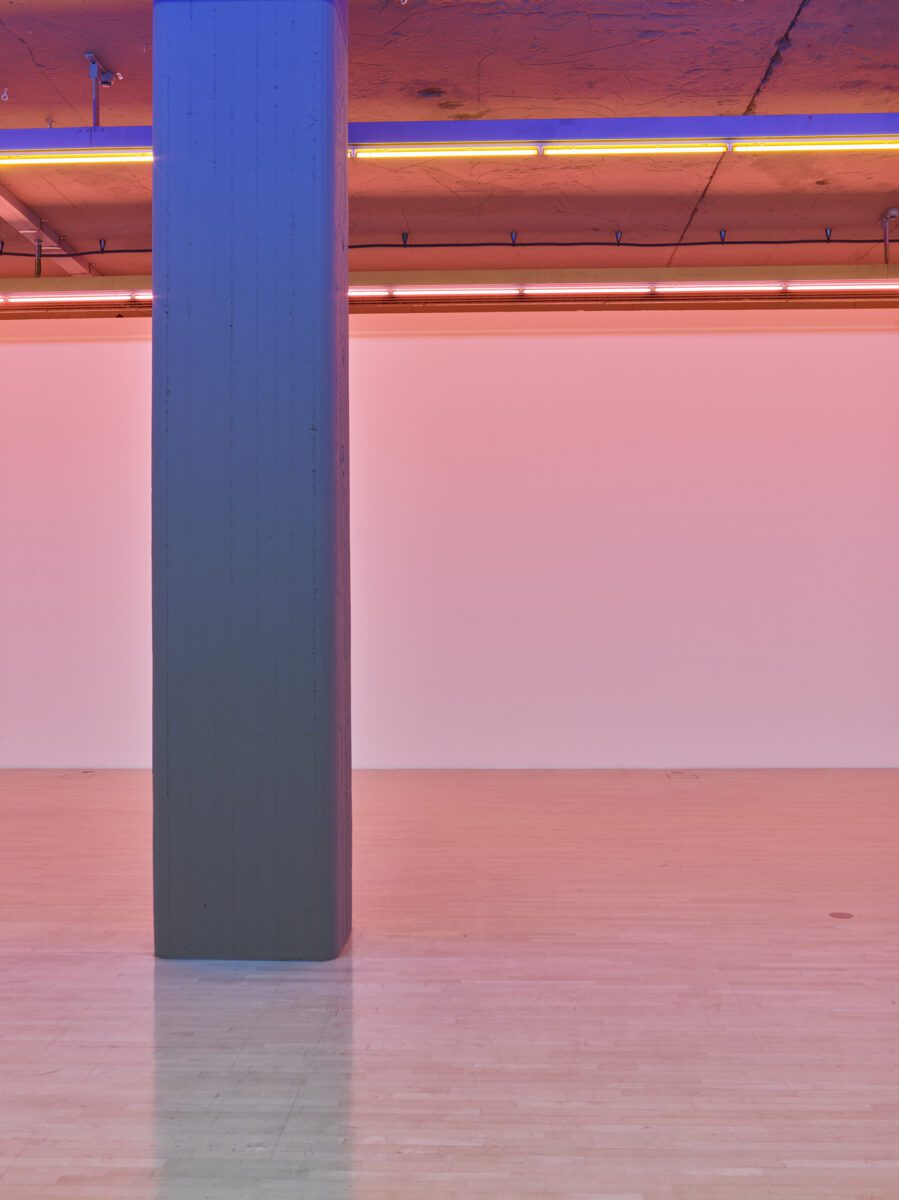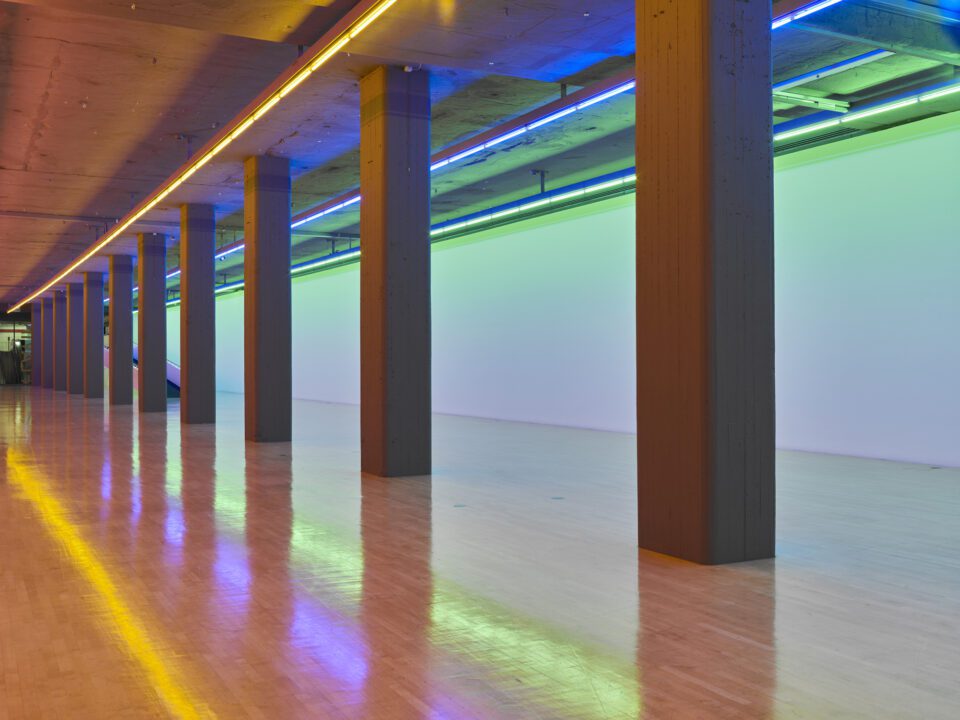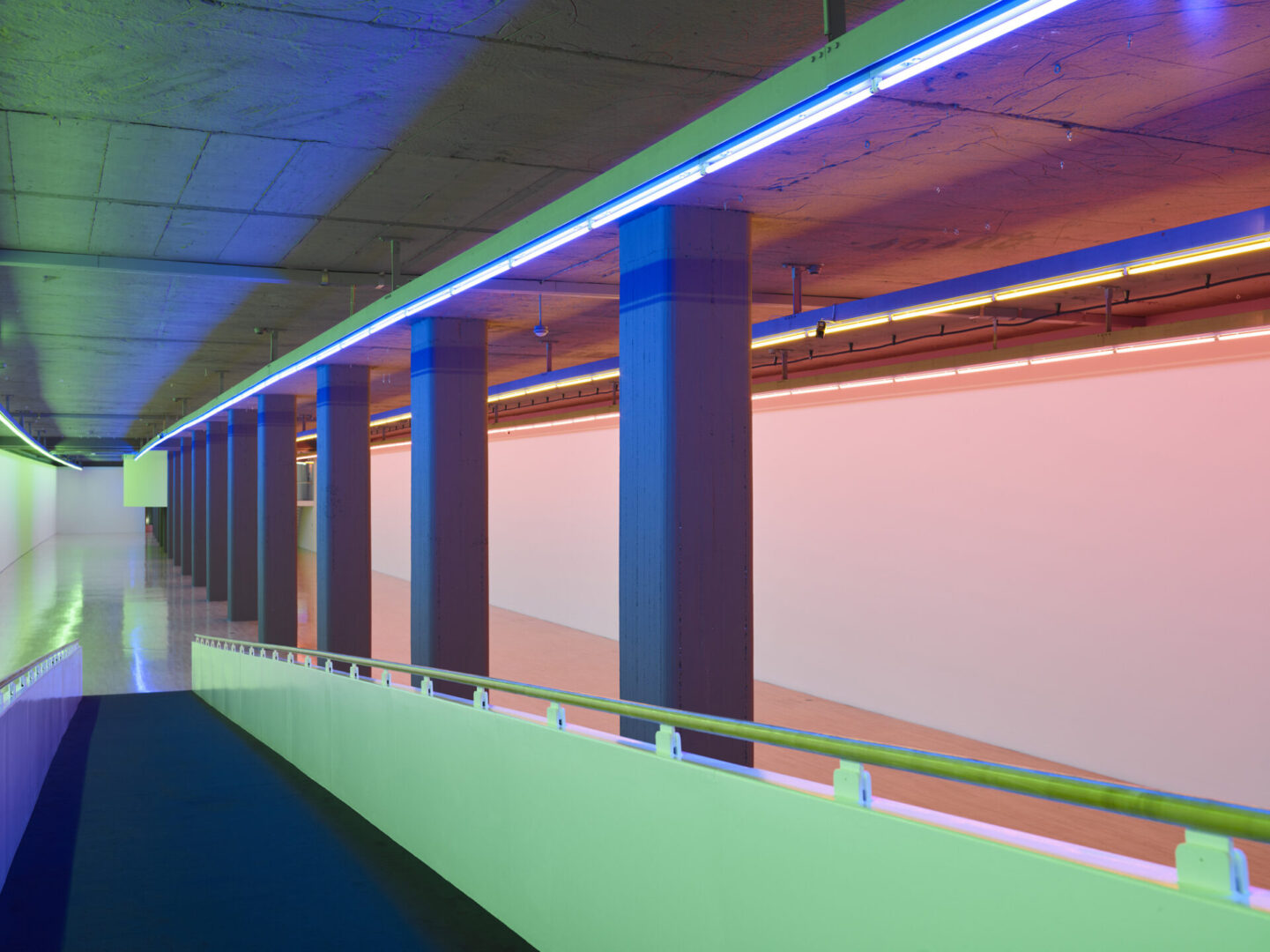In 1963, Dan Flavin (1933-1996) attached a yellow, fluorescent lamp to a wall – at an angle – and called it art. From that moment, the American artist worked exclusively with commercially available light tubes. He had invented a radical new medium, and would go on to become known as a pioneer of Minimalism and a foremost proponent of light art. His installations – or “situations”, as he called them – grew in scale throughout the 1970s and 1980s. They spanned corner-sized works to corridors and entire rooms that glowed red, pink, blue and green. Over time, the configurations became more complex, forming t-shapes, squares, ladders and lattices. By the early 1990s, he was filling major institutions, including the iconic Frank Lloyd Wright-designed Solomon R. Guggenheim Museum in New York, with multicoloured illumination.

The Kunstbau exhibition hall, part of Lenbachhaus Munich, was one of these spaces. It opened in 1994, with designers Uwe Kiessler + Partner taking inspiration from a nearby subway station. In March of that year, the Lenbachhaus received a fax from the Dan Flavin Studio: a minimalist drawing outlining the conceptual framework and technical instructions for installing fluorescent lamps on the Kunstbau’s lighting track. It was to be one of Flavin’s final “situations”, created just two years before his death in 1996. The result, untitled (for Ksenija), is a prime example of Flavin’s continued engagement with architecture. It is now a permanent part of the Lenbachhaus collection, and is being shown for the tenth time in 2025.

The piece brings the museum’s architecture to life. Green, blue, yellow and pink tubes run the length of the ceiling, bathing the entire space – including its visitors – in colour. Flavin once described light as “as plain and open and direct an art as you will ever find,” and untitled (for Ksenija) perfectly embodies this maxim. An otherwise empty room is re-energised by what seems, on paper, a simple intervention. Our perceptions of space are transformed: suddenly, we look around in wonder, take photos and notice details we might otherwise overlook. Immersive art is hugely popular today: consider teamLab, the Japanese collective that recently launched a new museum in Kyoto, or Squidsoup, whose 8,000-LED installation Submergence has just opened at York Art Gallery. Flavin’s influence is woven into these contemporary experiences, and untitled (for Ksenija) offers a chance to engage with the vision of the artist who started it all.
Dan Flavin: untitled (for Ksenija), is at Lenbachhaus, Munich, until 30 November 2025.
Words: Eleanor Sutherland
Image Credits:
1. Dan Flavin, untitled (for Ksenija), 1994, Städtische Galerie im Lenbachhaus und Kunstbau Munich, donation from Heiner and Philippa Friedrich in memory of their parents Erika and Harald Friedrich and Dominique and John de Menil © Estate of Dan Flavin / VG Bild-Kunst, Bonn 2018. Photo: Simone Gänsheimer, Lenbachhaus
2. Dan Flavin, untitled (for Ksenija), 1994, Städtische Galerie im Lenbachhaus und Kunstbau München / Lenbachhaus Munich, Schenkung von Heiner und Philippa Friedrich im Andenken an ihre Eltern Erika und Harald Friedrich und Dominique und John de Menil / Donated by Heiner and Philippa Friedrich in memory of their parents Erika and Harald Friedrich and Dominique and John de Menil © Estate of Dan Flavin / VG Bild-Kunst, Bonn 2018. Foto / Photo: Simone Gänsheimer, Lenbachhaus
3. Dan Flavin, untitled (for Ksenija), 1994, Städtische Galerie im Lenbachhaus und Kunstbau München / Lenbachhaus Munich, Schenkung von Heiner und Philippa Friedrich im Andenken an ihre Eltern Erika und Harald Friedrich und Dominique und John de Menil / Donated by Heiner and Philippa Friedrich in memory of their parents Erika and Harald Friedrich and Dominique and John de Menil © Estate of Dan Flavin / VG Bild-Kunst, Bonn 2018. Foto / Photo: Simone Gänsheimer, Lenbachhaus





